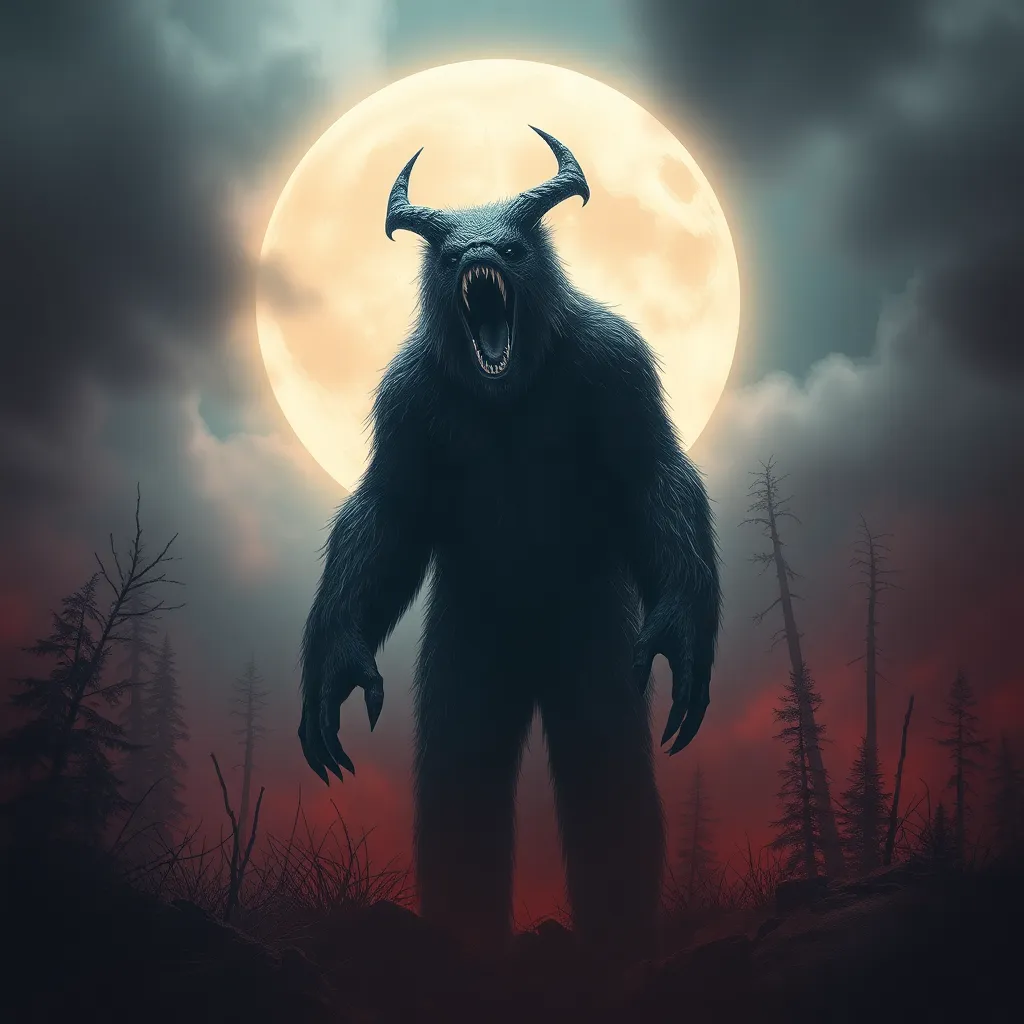The Chupacabra: Bigfoot’s Vampire Cousin?
I. Introduction
The Chupacabra, a creature steeped in myth and mystery, has captivated the imaginations of many since its first reported sighting in the 1990s. This legendary being, known for its alleged blood-sucking habits, shares the cryptid spotlight with other elusive creatures, most notably Bigfoot. In this article, we aim to explore the intriguing similarities and differences between these two enigmatic figures, examining their origins, behaviors, and cultural significance.
II. The Origins of the Chupacabra
The Chupacabra legend traces its roots back to Puerto Rico, where the first sightings were reported in the mid-1990s. The name “Chupacabra,” derived from Spanish, translates to “goat-sucker,” reflecting its reputed penchant for attacking livestock, particularly goats.
Historical accounts and sightings of the Chupacabra have since expanded beyond Puerto Rico, with reports emerging from various regions across Latin America and even parts of the United States. As sightings proliferated, the Chupacabra became a part of local folklore, representing not just a creature of the night, but also the anxieties and fears of rural communities facing livestock predation.
Culturally, the Chupacabra holds significant weight in folklore, embodying themes of fear, survival, and the unknown. It serves as a symbol of the intersection between reality and myth, illustrating how stories can evolve and adapt within different cultural contexts.
III. Physical Description and Characteristics
Descriptions of the Chupacabra vary widely, but several common traits are often cited:
- Approximately 3 to 4 feet tall
- Spiny or scaly back, resembling a reptile
- Large, glowing red eyes
- Sharp fangs and claws
- Hairless, with a grey or greenish skin tone
Regional variations also exist, with some reports describing the creature as more dog-like, while others depict it as a more humanoid figure. This contrasts sharply with Bigfoot, who is typically described as a large, hairy, ape-like creature standing between 6 to 10 feet tall, often associated with the forests of North America.
IV. Behavior and Diet
The Chupacabra is perhaps most notorious for its alleged feeding habits, specifically its blood-sucking tendencies. Eyewitness accounts often describe livestock found drained of blood, marked by small puncture wounds on their bodies. This behavior has fueled speculation about its origins and motivations.
In contrast, Bigfoot is generally considered an omnivore, with reported sightings often placing it foraging for fruits, nuts, and small animals. While both creatures elude concrete evidence of their existence, their dietary habits reflect their differing representations in folklore.
Theories about why the Chupacabra targets livestock include:
- Competition for food sources in rural areas
- Instinctual behavior to survive in a changing environment
- Mythical depictions as a supernatural entity
V. The Chupacabra in Popular Culture
The Chupacabra has made a significant impact on popular culture, appearing in various media forms such as movies, TV shows, and books. From horror films to children’s cartoons, the creature’s mysterious nature has been adapted to fit numerous narratives.
Some notable representations include:
- The TV series “The X-Files,” which featured episodes centered around cryptids.
- Documentaries exploring the legend and purported sightings.
- Merchandise ranging from plush toys to apparel, capitalizing on its popularity.
The impact of the Chupacabra on public perception cannot be understated. It has contributed to the rich tapestry of folklore, inspiring curiosity and fear alike. As a result, it has become a staple of conversations surrounding cryptids.
VI. Scientific Investigations and Skepticism
Despite numerous sightings, the scientific community remains skeptical about the existence of the Chupacabra. Investigations into reported encounters often reveal a lack of concrete evidence. Instead, many alleged sightings have been attributed to misidentified animals, such as coyotes suffering from mange.
Scientific explanations for Chupacabra encounters include:
- Misidentification of known wildlife
- Hoaxes and fabricated stories
- Psychological phenomena, such as pareidolia, where people see patterns in random stimuli
The role of hoaxes and misidentifications plays a significant part in the ongoing debate about the Chupacabra’s existence, reflecting the challenges faced by cryptozoologists and enthusiasts alike.
VII. Community and Cryptozoological Interest
The Chupacabra serves as a potent symbol of fear and fascination, drawing interest from both amateurs and professionals dedicated to cryptid research. Various groups and individuals actively investigate sightings and promote awareness about the Chupacabra and similar creatures.
This intersection of folklore and modern science fosters a unique environment where enthusiasts can explore the unknown, often blending myth with empirical inquiry. The community surrounding the Chupacabra is diverse, encompassing:
- Cryptozoologists conducting field research
- Folklorists studying the cultural significance
- Amateur investigators sharing their findings online
VIII. Conclusion
The Chupacabra holds a significant place in the realm of cryptids, representing not only a fascinating legend but also the fears and hopes of those who encounter it. Its relationship with Bigfoot underscores the diversity of cryptids and the ways they reflect human curiosity about the unknown.
As we delve into the allure of these creatures, we find that their stories continue to captivate our imaginations, highlighting our desire to explore the mysteries that lie just beyond our understanding. The enduring fascination with the Chupacabra and its vampire-like nature ensures that it will remain a prominent figure in folklore and popular belief for years to come.



